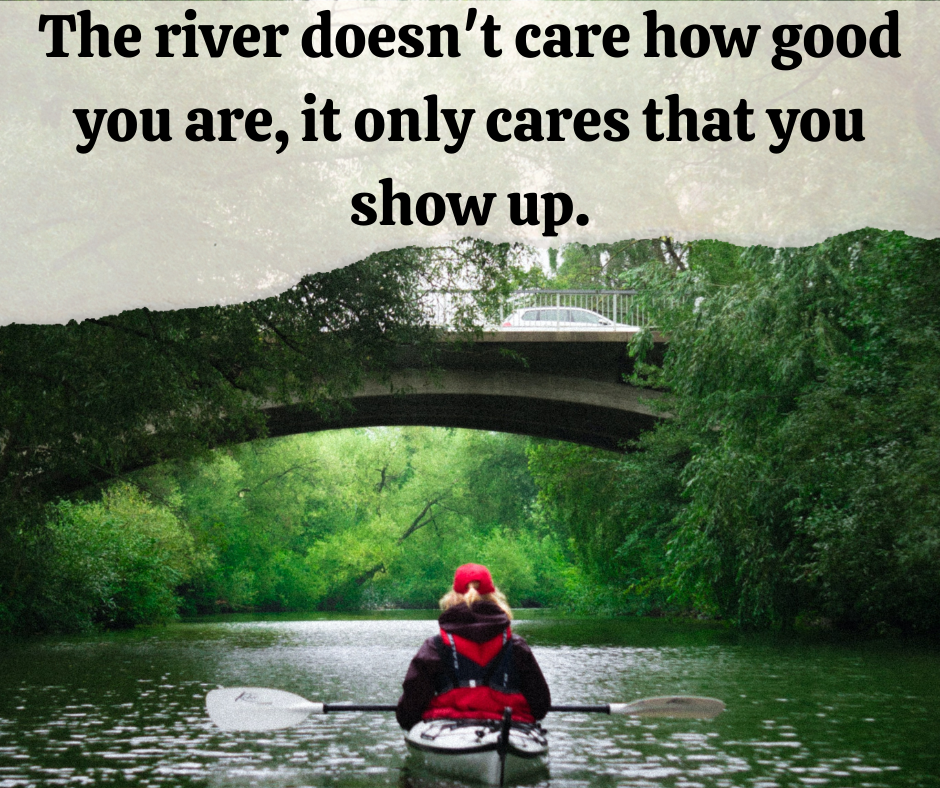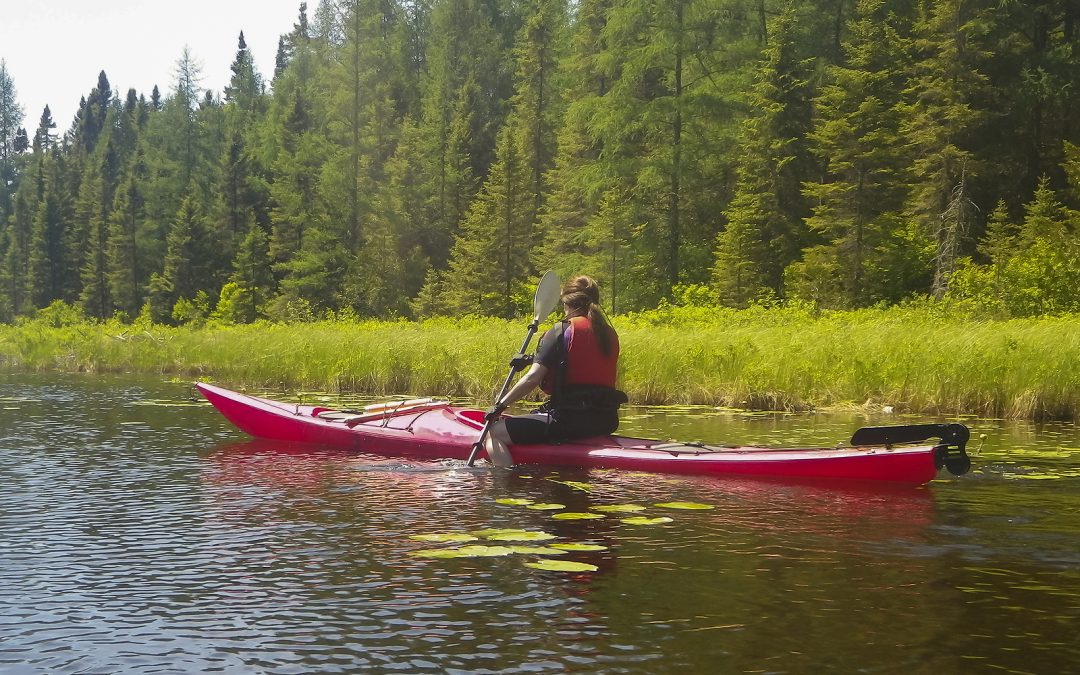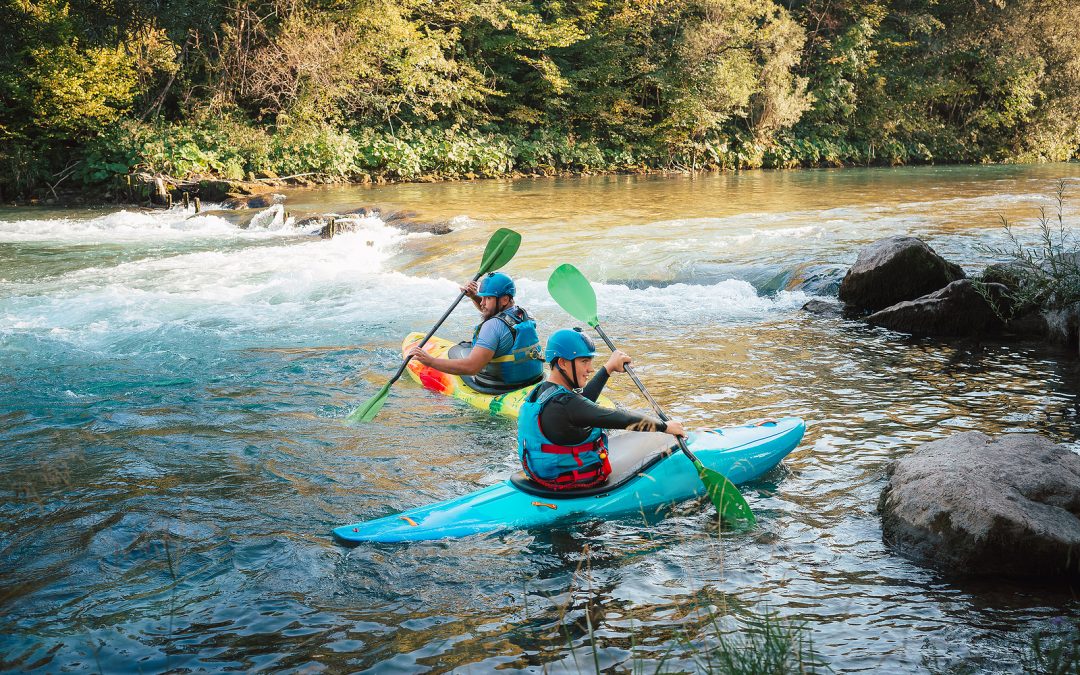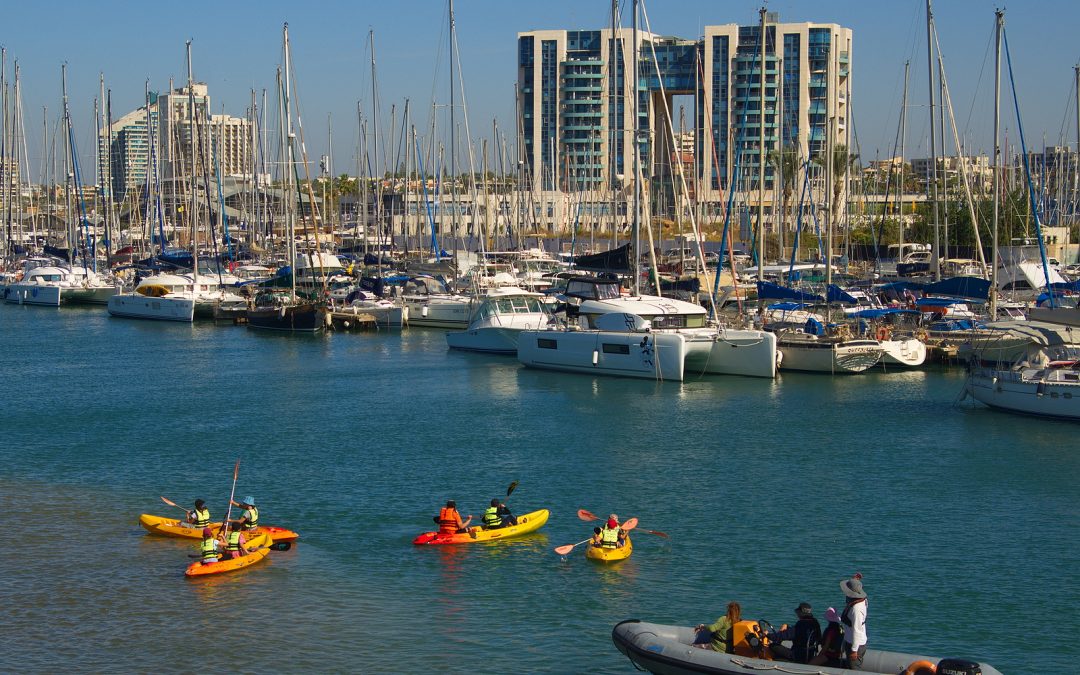What are the Differences Between a Kayak and a Canoe: A Clear and Neutral Explanation
Kayaking and canoeing are popular outdoor activities that involve paddling a small watercraft through the water. While both sports are similar, there are some fundamental differences between a kayak and a canoe. Understanding these differences can help you choose the right watercraft for your next adventure.
One of the most obvious differences between a kayak and a canoe is their shape and size. Kayaks are typically smaller, narrower, and more streamlined than canoes. They are designed to be more agile and faster, making them ideal for navigating rapids or other challenging water conditions. Conversely, canoes are larger and wider, with open tops and higher sides. They are typically used for leisurely paddling on calm waters like lakes and slow-moving rivers.
Another key difference between kayaks and canoes is the way they are paddled. In a kayak, the paddler sits with their legs stretched out in front of them and uses a double-bladed paddle to propel the boat forward. Conversely, canoes are paddled from a seated or kneeling position using a single-bladed paddle. The paddling technique in each boat differs, with kayaking requiring a more symmetrical and efficient stroke, while canoeing requires more upper body strength and a more varied stroke.

Key Takeaways
- Kayaks are smaller, more streamlined, and faster than canoes, while canoes are larger and wider with an open top and higher sides.
- Kayaks are paddled using a double-bladed paddle, while canoes are paddled using a single-bladed paddle, requiring different paddling techniques.
- Choosing the right watercraft depends on the type of water you will be paddling on and your preferences.
Benefits of Kayak and Canoe
Kayaking and canoeing are great ways to explore the outdoors and enjoy the water. Here are some benefits of each:
Benefits of Kayaking
- Easy to maneuver: Kayaks are designed to be more maneuverable than canoes, making them perfect for navigating through narrow waterways, rapids, and other obstacles.
- Great exercise: Kayaking is a great way to get a full-body workout. Paddling works your arms, shoulders, back, and core muscles.
- Faster: Kayaks are generally faster than canoes, making them a good choice for longer trips or races.
- More stable in rough waters: Kayaks are designed to be more stable in rough waters than canoes, making them a safer option for paddling in choppy conditions.
Benefits of Canoeing
- More space: Canoes are generally larger than kayaks, making them better for carrying more gear or people. Some canoes can even accommodate up to 10 people.
- Better for fishing: Canoes are often preferred by anglers because they offer more room for gear and allow for easier casting.
- Easier to get in and out of: Canoes have an open design that makes them easier to get in and out of than kayaks, which require you to climb through a small cockpit.
- More comfortable: Canoes offer more room to move around and stretch out, making them a more comfortable option for longer trips or people with larger body types.
Overall, both kayaking and canoeing offer a variety of benefits and can be enjoyed by people of all ages and fitness levels. Whether you prefer the speed and maneuverability of a kayak or the space and comfort of a canoe, a watercraft is perfect for you.
Fundamentals of Kayak and Canoe
Understanding Kayaks
Kayaks are narrow, sleek boats designed to be used in fast-moving water. They are typically used for white water rafting, surfing, and other similar activities. Kayaks are also great for fishing and touring. They are designed to be fast, maneuverable, and often used in races.
Kayaks are typically made of plastic, fiberglass, or carbon fiber. They can be sit-in or sit-on-top, propelled by a double-bladed paddle.
Understanding Canoes
Canoes are wider and more stable than kayaks. They are typically used for leisurely paddling on calm water, such as lakes and rivers. Canoes are also great for fishing and camping trips, as they can carry more gear than a kayak.
Canoes are typically made of wood, aluminum, or plastic. They can be opened or closed, and a single-bladed paddle propels them.
Both kayaks and canoes have their advantages and disadvantages. Kayaks are faster and more maneuverable but less stable than canoes. Canoes are wider and more stable, but they are slower than kayaks.
In summary, kayaks and canoes are great boats that can be used for various activities. Understanding their differences can help you choose the right boat for your needs.
Physical Differences
Structure
Kayaks and canoes have different structures. Kayaks are typically narrower and longer than canoes, and they have a closed cockpit that the paddler sits inside. Canoes, on the other hand, have an open top and are wider and shorter than kayaks. Canoes also have higher sides than kayaks, which makes them more stable in rough water.
Materials
Kayaks and canoes are made from different materials. Kayaks are usually made from plastic, fiberglass, or composite materials, while canoes are often made from wood, aluminum, or plastic. The materials used to make the boat affect its durability, weight, and performance.
Size and Weight
Kayaks and canoes also differ in size and weight. Kayaks are generally smaller and lighter than canoes, which makes them easier to transport and maneuver. Canoes are typically larger and heavier, which makes them more stable in the water and better suited for carrying gear and passengers.
Overall, the physical differences between kayaks and canoes are significant. Kayaks are more streamlined and better suited for speed and maneuverability, while canoes are more stable and better suited for carrying gear and passengers. The choice between a kayak and a canoe ultimately depends on the individual’s needs and preferences.
Functional Differences
Paddling Techniques
The paddling technique is one of the most significant differences between a canoe and a kayak. Canoes are paddled with a single-bladed paddle, while kayaks require a double-bladed paddle. The single-bladed paddle used in a canoe requires a different paddling technique than the double-bladed paddle used in a kayak. In a canoe, the paddler sits on a bench seat and uses a J-stroke to keep the boat moving straight. In a kayak, the paddler sits on a low seat with extended legs and uses a forward stroke to move forward.
Stability and Speed
Canoes are generally wider and have a flatter bottom than kayaks, making them more stable in calm waters. However, kayaks are designed to be faster and more maneuverable than canoes. Kayaks are also more streamlined and have a lower profile, which allows them to cut through the water more efficiently than canoes.
Suitability for Water Types
Canoes better suit calm waters such as lakes, ponds, and slow-moving rivers. They can also handle mild rapids but are not designed for more challenging whitewater conditions. On the other hand, Kayaks are designed to handle various water types, including calm lakes and rivers, as well as more challenging whitewater conditions. They are also used for sea kayaking, which involves paddling in open water and dealing with waves and currents.
The choice between a canoe and a kayak depends on the paddler’s preferences and the type of water they plan to paddle on. Canoes are better for calm waters and leisurely paddling, while kayaks are better for more challenging conditions and faster-paced paddling.
Usage Differences
Kayaks and canoes are versatile watercraft that can be used for various purposes. However, some differences in their usage make them better suited for certain activities than others.
Recreational Use
Kayaks are often used for recreational purposes such as leisurely paddling, fishing, and exploring calm waterways. They are generally faster and more maneuverable than canoes, which makes them ideal for navigating narrow streams and winding rivers. Kayaks also offer a more intimate connection to the water, as the paddler is seated low to the surface and can feel the movement of the water more acutely.
Canoes, on the other hand, are better suited for recreational activities that involve larger groups or more gear. Canoes offer more space for passengers and equipment, making them ideal for camping trips or family outings. They are also more stable than kayaks, which makes them a good choice for beginners or those who want a more relaxed paddling experience.
Sporting Use
Kayaks are often used for sporting activities such as whitewater rafting, sea kayaking, and racing. They are designed for speed and agility, which makes them ideal for navigating rapids and rough waters. Kayaks used for these activities are typically shorter and more compact, with a closed cockpit that protects from the elements.
Canoes are also used for sporting activities such as racing and fishing but are generally less well-suited than kayaks. Canoes used for racing are typically longer and narrower than recreational canoes, with a streamlined shape that allows for faster speeds. Canoes used for fishing are often equipped with rod holders and other accessories that make catching fish from the boat easier.
Expedition Use
Both kayaks and canoes are used for expedition-style trips, such as multi-day paddling or long-distance journeys. Kayaks used for these purposes are typically longer and more stable than recreational kayaks, with a larger storage capacity for gear and supplies. They may also be equipped with a rudder or skeg to help with steering.
Canoes used for expeditions are typically larger and more stable than recreational canoes, with a higher weight capacity for gear and supplies. They are often equipped with a sail or outriggers to help with propulsion and stability in rough waters.
Overall, the choice between a kayak and a canoe will depend on the paddler’s intended use and preference. Both watercraft offer unique advantages and disadvantages; each is well-suited for certain activities.
Safety Considerations
Kayaking and canoeing are both fun and exhilarating water sports, but it is important always to keep safety in mind. Both kayaks and canoes have unique safety considerations; it is important to be aware of them before hitting the water.
Kayak Safety
Kayaking can be a thrilling experience, but it is important to take the necessary precautions to ensure a safe and enjoyable outing. Here are a few safety considerations to keep in mind when kayaking:
- Always wear a properly fitting life jacket.
- Make sure to use a double-bladed paddle appropriate for your skill level.
- Be aware of your surroundings and watch out for other boats, swimmers, and obstacles in the water.
- Avoid kayaking in rough or choppy waters, especially if you are a beginner.
- If you capsize, stay with your kayak and try to right it before attempting to swim to shore.
Canoe Safety
Canoeing is a great way to explore the waterways, but it is important to take the necessary precautions to ensure a safe and enjoyable outing. Here are a few safety considerations to keep in mind when canoeing:
- Always wear a properly fitting life jacket.
- Make sure to use a single-bladed paddle appropriate for your skill level.
- Be aware of your surroundings and watch out for other boats, swimmers, and obstacles in the water.
- Avoid canoeing in rough or choppy waters, especially if you are a beginner.
- If you capsize, stay with your canoe and try to right it before attempting to swim to shore.
In addition to these safety considerations, it is important to be prepared for emergencies. Bringing a waterproof first aid kit, a whistle, and a cell phone in an emergency is a good idea. It is also important to be aware of the weather conditions and to avoid canoeing or kayaking in severe weather. By following these safety considerations, you can enjoy a safe and fun-filled day on the water.
Pros and Cons of Kayak and Canoe
Kayaks and canoes are excellent choices for water sports enthusiasts, but each has pros and cons. Here are some of the key advantages and disadvantages of kayaks and canoes:
Kayak Pros
- Kayaks are more maneuverable than canoes, making them ideal for navigating through narrow waterways and tight spaces.
- Kayaks are generally faster than canoes, which makes them a great choice for people who want to cover more distance in less time.
- Kayaks are typically more stable than canoes, which makes them easier to balance on the water.
- Kayaks are usually lighter and more compact than canoes, which makes them easier to transport and store.
Kayak Cons
- Kayaks can be more difficult to get in and out of than canoes, especially for people with limited mobility.
- Kayaks can be less comfortable than canoes, especially for people who prefer to sit with their legs extended.
- Kayaks can be more expensive than canoes, especially if you are looking for high-end models with advanced features.
Canoe Pros
- Canoes are more spacious than kayaks, which makes them ideal for carrying larger loads or multiple passengers.
- Canoes are more comfortable than kayaks, especially for people who prefer to sit with extended legs.
- Canoes are usually less expensive than kayaks, especially if looking for basic models with few features.
Canoe Cons
- Canoes are less maneuverable than kayaks, which makes them more difficult to navigate through narrow waterways and tight spaces.
- Canoes are generally slower than kayaks, making them less efficient for covering long distances.
- Canoes are less stable than kayaks, which makes them more difficult to balance on the water.
The choice between a kayak and a canoe comes down to personal preference and intended use. If you prioritize speed, maneuverability, and stability, a kayak might be your best choice. A canoe might be the better option if you prioritize space, comfort, and affordability.

Conclusion
In summary, kayaks and canoes have unique characteristics and are suitable for different activities. Kayaks are generally smaller and more maneuverable, ideal for recreational fishing, touring, and whitewater paddling. On the other hand, canoes are larger and designed to carry more people and gear, making them perfect for camping, river trips, and family outings.
One key difference between kayaks and canoes is the way they are paddled. Kayakers use a double-bladed paddle, while canoeists use a single-bladed paddle. This difference in paddling technique affects how the boat is steered and how much effort is required to move the boat.
Another difference between kayaks and canoes is the seating position. In a kayak, the paddler sits with their legs stretched out in front of them, while in a canoe, the paddler kneels or sits on a raised seat. This difference in seating position affects the stability and maneuverability of the boat.
Regarding design, canoes are typically wider and have an open top, while kayaks are narrower and have a closed cockpit. This difference in design affects the amount of gear that can be carried and the level of protection from the elements.
The choice between a kayak and a canoe depends on the individual’s preference and the activity they plan to use the boat. Both boats offer a fun and exciting way to explore the waterways and enjoy the great outdoors.
Frequently Asked Questions
What are the four categories used to compare kayaks and canoes?
Kayaks and canoes can be compared based on their design, purpose, performance, and history. Understanding these four categories can help individuals choose the right watercraft that suits their needs.
What makes a canoe different from a kayak?
The main difference between a canoe and a kayak is their design. Canoes are open boats with an open top and no cockpit, while kayaks have a closed top with a cockpit. Additionally, canoes are typically larger and heavier than kayaks and have a wider beams, making them more stable in calm waters.
Which is easier, canoeing or kayaking?
The answer to this question depends on the individual’s preferences and skill level. Generally, kayaking requires more upper-body strength and coordination, while canoeing requires more lower-body strength and balance. However, both activities can be enjoyable and easy with practice.
What is one difference between canoeing and kayaking?
One key difference between canoeing and kayaking is the type of paddle used. Canoeists use a single-bladed paddle, while kayakers use a double-bladed paddle. Additionally, the seating position and boat design differ between the two activities.
Is canoeing similar to kayaking?
Canoeing and kayaking share some similarities, such as non-motorized water sports requiring paddling. However, the boats used, paddling techniques, and overall experience differ between the two activities.
What are the differences in stability between kayaks and canoes?
Kayaks are generally less stable than canoes due to their narrower beam and closed cockpit design. This design allows kayaks to be more maneuverable, faster than canoes, and less stable. On the other hand, canoes have a wider beam and open-top design, providing more stability in calm waters.















